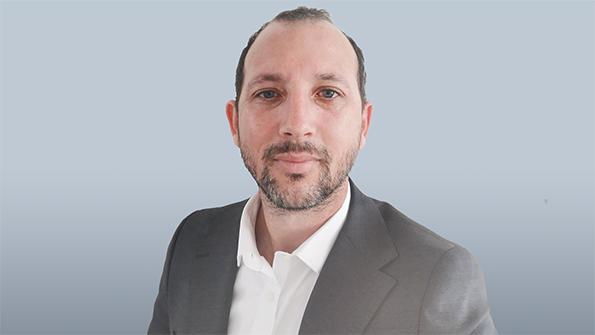This article is published in Aviation Week & Space Technology and is free to read until Jun 07, 2024. If you want to read more articles from this publication, please click the link to subscribe.

Justin O’Donnell is the technical director at Riyadh Air.
Justin O’Donnell, technical director at Riyadh Air, talks with James Pozzi about how the Saudi Arabian startup carrier is establishing its technical operations in the run-up to its planned April 2025 launch date.
Riyadh Air is scheduled to launch operations as an airline in 2025. What is the current schedule for aircraft deliveries?
Deliveries of the Boeing 787-9 – comprised of 39 firm orders – are scheduled to start in 2025 and be completed by the end of 2027. There are options for 33 additional 787s and they’d begin after the initial deliveries should we choose to proceed. Riyadh Air hasn’t committed to a narrowbody aircraft order yet, but that’s in its final stages so hopefully there will be an announcement for that in the next few months.
Just more than one year out from then, what stage is the startup carrier’s technical operation at?
There are some key milestones for the airline operations team this year; first, to deliver the AOC which will enable Riyadh Air to progress the commercial side of the launch. This is what the key people in operations are ultimately working towards. For the Engineering and maintenance division, we’ve opted for a fully digital solution and have selected SWISS AS’s AMOS software suite for this. We aim to use the latest tools such as artificial intelligence and machine learning to see how we can really optimize the maintenance side of Riyadh Air to get the model right early on. We also aim to be a completely paperless operation and use electronic signatures in line with our sustainability initiatives. With that selected now, we’re working mainly with Boeing and getting a lot of the data to populate the digital tools and building on our process mapping, policy and procedures. We also are working with the General Authority of Civil Aviation (GACA) to make sure we are where the regulator needs us to be, before we proceed with an aircraft to start the demonstration phase.
When will the technical operation of Riyadh Air begin operating?
For the technical department, our readiness date to be a minimum viable product is mid 2024. This is when we’d like to be able to show we have basic Continuing Airworthiness Management Organisation (CAMO) functionality, we’ve working on some very basic maintenance functionality and contracts to be in place that give us access to spare parts and tooling along with having the necessary people in place at out stations too. In this sense, our focus is very short-term orientated right now, but equally they’re the stepping stones and enablers to much greater longer-term solutions as well. These initial agreements for access to some materials, components support, or some maintenance arrangements will be precursors to much bigger partnership arrangements in Saudi Arabia.
Long-term, do you envisage Riyadh Air’s technical operations doing a lot of its maintenance in-house or will you look to outsource much of your MRO requirements?
We are looking at being a big contributor to Saudia Arabia’s aviation ecosystem where companies don’t just supply our airline from overseas, we look to source locally or find long-term partners, it is envisaged that these partners will establish facilities and a workforce within the Kingdom so we can play a part in growing the wider industry here. This project isn’t just about building an airline, it’s also developing the ecosystem behind it.
Where we intend to have a level of partnership with local providers, we are working to determine the best fit for all parties. We have a strong relationship through a Saudia Technic partnership after the LOI announced at MROME, particularly related to the maintenance support during our AOC demonstration phase. Long-term, it makes sense to partner locally for big ticket component items such as nacelles, fairings, flaps, slats and even areas such as engines. There’s a lot of investment happening at the MRO hub in Jeddah and it makes sense to have capacity and capability in these areas. But as an airline, we must give MRO providers time to develop their maintenance offerings. We’ll work with them to increase their capacity and capability over time and would anticipate most of our line stations being outsourced initially through our growth phase.
Given the potential influx of aircraft into the Middle East, do you foresee any issues related to MRO capacity within the region?
There’s some really good work in the region going into infrastructure-based capacity. However, Boeing, Airbus, Embraer and Bombardier are producing more aircraft than there is maintenance capacity coming online. I see a local boost in training schools as being a solution to fixing the manpower problem. We recently reinforced our commitment to young Saudis with 27 female students starting with IATC, a step delivering our commitment to improve gender diversity and equality in aviation maintenance. Equally, aviation in the Kingdom is a growing industry, and we really need to target that grassroots level and get people who come straight out of school before they choose another career path. Once their interest is caught, there’s a much higher chance they will be kept in the industry long-term. our priority is to invest in young Saudis and prepare them for technical roles while positioning them for future leadership roles as they develop over the coming years.
So far in the setup phase, have you encountered any major challenges in the supply chain?
The answer is no because we’ve had a lot of interest from companies wanting to talk to us. This would likely be a different story if we were setting up on our own, but instead we are working with companies who have been through these challenges and overcome them. Instead of exposing ourselves to these risks, we’d rather work with some of the best out there and leverage these partnerships. There are some big players who want to move skillset and capability into Saudi Arabia and that will help further to offset some of these risks long-term. Our CEO has often mentioned the level of interest and just how everyone wants to be part of the RX story.
What is the strategy for ramping up personnel numbers in Riyadh Air’s technical division?
At the moment, there’s a core team of people in the engineering and maintenance division and this will increase slightly this year. The workforce is being kept lean for now as we determine the path going into operation next year and whether there will be a lot of maintenance or just carrying out support for the AOC process. Our strategy is to develop local talent on a long-term basis while also filling roles from global talent pools as we need, bearing in mind that we have had over 1.2 million applicants across all vacancies at Riyadh Air. In the second half of this year through into 2025, I expect there will be more aggressive recruitment as the engineering and maintenance division will grow significantly by the time we start operations next year. Up to 2030, it’s estimated that we’ll need about well over 1,000 people to support the operation with in KSA, whether that’s working directly for Riyadh Air or being subcontracted support.




